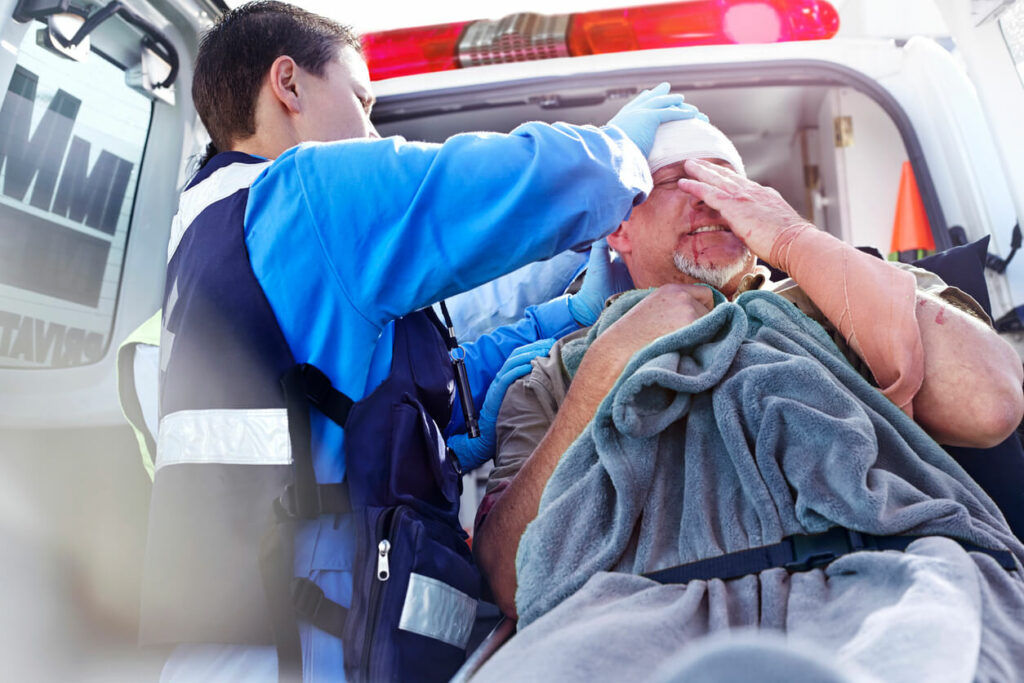
The sudden impact of an accident leaves its mark not only on your vehicle but also, more significantly, on your body. The path to healing is not linear; it weaves through the realms of physical therapy, exercises, and the resilience of the human spirit.
Physical therapy and exercises are not just steps towards healing; they are your allies in regaining strength, flexibility, and, most importantly, your quality of life. It is vital to understand the importance of these rehabilitation processes and how they can be tailored to meet your unique needs.
The Role of Physical Therapy
Physical therapy plays an important role in the recovery process following auto injuries, serving as a key component in healing. It is not just a treatment modality; it is a personalized journey toward regaining your pre-accident level of function, mobility, and overall well-being.
The role of physical therapy in rehabilitation is multifaceted, addressing the physical, emotional, and psychological aspects of recovery.
Tailored to Individual Needs
The beauty of physical therapy lies in its customization. No two injuries are the same, and thus, no two therapy plans are identical.
Physical therapists conduct thorough assessments to create a program that addresses your:
- Specific injuries
- Pain levels
- Recovery goals
This personalized approach ensures that you receive the most effective treatments for your unique situation.
Pain Management
One of the primary roles of physical therapy is to manage pain effectively without relying solely on medication.
Physical therapists can reduce pain levels and enhance your quality of life during the recovery process. They can do this through various techniques such as:
- Manual therapy
- Therapeutic exercises
- Modalities like ultrasound or electrical stimulation
Restoring Function and Mobility
Auto injuries often result in reduced mobility and impaired function. Physical therapy employs a series of targeted exercises and stretches designed to:
- Improve range of motion
- Strengthen muscles weakened by injury
- Restore normal movement patterns
This gradual and progressive approach helps to rebuild your body’s capability to perform daily activities without discomfort.
Preventing Long-Term Damage
Beyond immediate recovery, physical therapy plays a crucial role in preventing long-term damage and complications.
By addressing issues early on, physical therapy can mitigate the risk of chronic pain, stiffness, and other conditions that might arise from untreated or improperly healed injuries.
Education and Empowerment
Physical therapists also serve as educators, empowering you with knowledge about your body, the nature of your injuries, and how to prevent future issues.
This educational aspect is vital, as understanding the mechanics of your body and the principles of injury prevention can transform how you approach your health and activities post-recovery.
Support and Motivation
Recovery from an auto injury can be a challenging and sometimes lonely road. Physical therapists provide not only expert care but also emotional support. They are there to:
- Motivate you
- Celebrate your milestones
- Encourage you through the ups and downs of the healing process
Essential Exercises for Healing
After an auto injury, integrating exercises into your recovery process is crucial for healing and regaining your strength and mobility.
These exercises, carefully chosen and tailored by your physical therapist, aim to address the specific areas affected by your injury.
Let us delve into some essential categories of exercises that play a pivotal role in the rehabilitation journey.
Flexibility Exercises
Flexibility exercises are the cornerstone of any rehabilitation program, aiming to restore the range of motion that may have been compromised due to the injury.
Gentle stretching routines are introduced to ease stiffness, improve flexibility, and reduce the risk of further injury. Examples include:
- Neck and shoulder stretches
- Back stretches
- Leg and ankle stretches
Strength-Building Exercises
Regaining strength is equally important, especially in muscles weakened by injury or prolonged inactivity.
Strength-building exercises focus on improving the muscle tone and endurance needed for daily activities. They include:
- Core strengthening
- Upper body exercises
- Lower body exercises
Specific Exercises for Neck and Back
The neck and back are commonly affected areas in auto injuries. Specific exercises tailored for these regions help in managing pain and enhancing recovery:
- Isometric neck exercises: These involve applying gentle pressure against the head to strengthen the neck muscles without moving the neck itself, ideal for whiplash recovery.
- Gentle back extensions: Lying face down and slowly lifting the upper body can strengthen the back muscles and alleviate pain.
Specific Exercises for Limbs
Injuries to the arms or legs require exercises that focus on regaining strength, flexibility, and function:
- Arm Lifts and Curls: To recover arm strength, using light weights or resistance bands can be effective.
- Walking or Cycling: Low-impact cardio exercises like walking or stationary cycling improve leg strength and cardiovascular health, aiding in overall recovery.
Auto Injury Care Near Me in Wilmington & Newark, DE
Each exercise, each therapy session, and each day brings you closer to reclaiming your health and vitality. The road to recovery may have its challenges, but with patience, perseverance, and the right approach, it leads to a destination of strength and wellness. Stay motivated, stay focused, and above all, stay positive.
Do you need compassionate and personalized auto injury care near you? If so, you can rely on Delaware Back Pain & Sports Rehabilitation Centers. As the best car accident clinic, we will ensure you get the care you need to help you recover. Call us today at (302) 5298-783 or book a visit using our online appointment request form.
We look forward to serving you!


